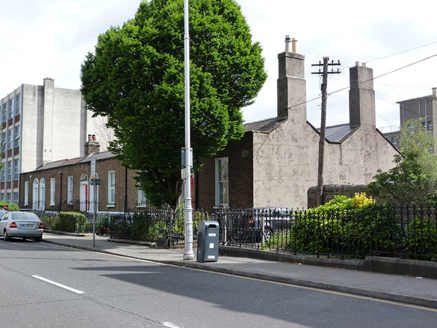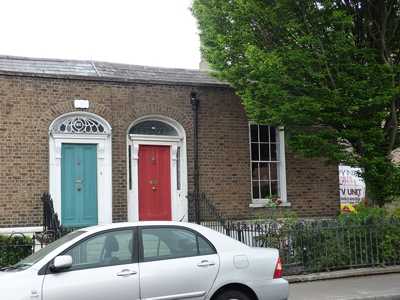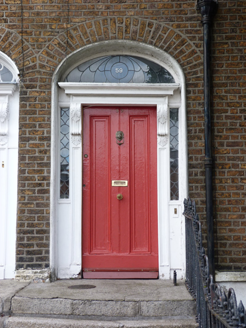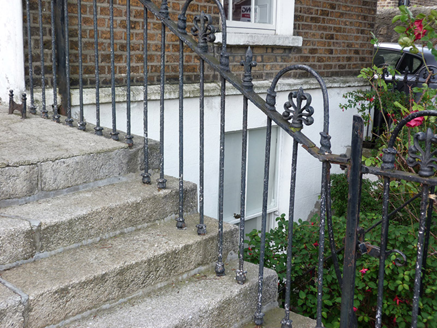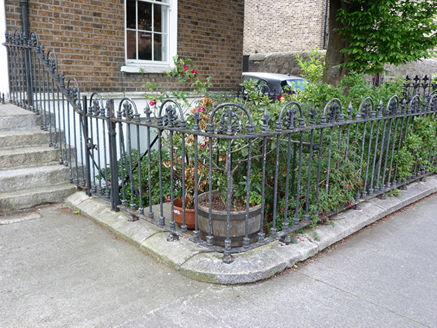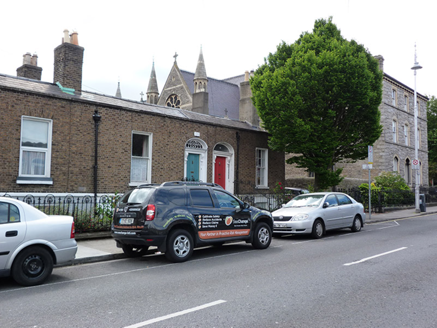Survey Data
Reg No
50110378
Rating
Regional
Categories of Special Interest
Architectural, Artistic
Original Use
House
In Use As
House
Date
1830 - 1850
Coordinates
315421, 232798
Date Recorded
30/05/2017
Date Updated
--/--/--
Description
End-of-terrace two-bay single-storey house over raised basement, built c. 1840, as one of terrace of six, having return to rear. M-profile pitched slate roof, hipped to rear, with rendered chimneystacks having clay pots. Brown brick parapet and cut granite coping, cast-iron rainwater goods. Brown brick, laid in Flemish bond, to wall to front (west) elevation, with masonry plinth course over lined-and-ruled rendered walls to basement. Rendered walls to side (south) and rear (east) elevation. Square-headed window openings having raised rendered reveals and masonry sills. Replacement windows. Elliptical-headed door opening with moulded render surround, doorcase comprising panelled pilasters, scrolled console brackets having anthemion detail, and stepped cornice. Leaded teardrop fanlight and sidelights, timber panelled door. Shared granite steps with cast-iron boot-scrape and coal-hole cover to rendered platform. Cast-iron railings with alternating fleur-de-lis and anthemion finials, set on cut granite plinth wall.
Appraisal
This house retains much of its original form, and is characteristic of suburban residential development dating to the mid-nineteenth century. Part of a terrace with similar proportions and features, it retains fine Greek revival railings with decorative anthemion heads, the work of a skilled craftsperson. The delicate teardrop fanlight adds artistic detailing to the restrained classical façade. Originally New Bride Street, Heytesbury Street was renamed for William á Court, 1st Baron Heytesbury, Lord Lieutenant of Ireland from 1844-46. The street comprises a series of individual terraces, reflecting the speculative nature of its development in the mid-nineteenth century.
